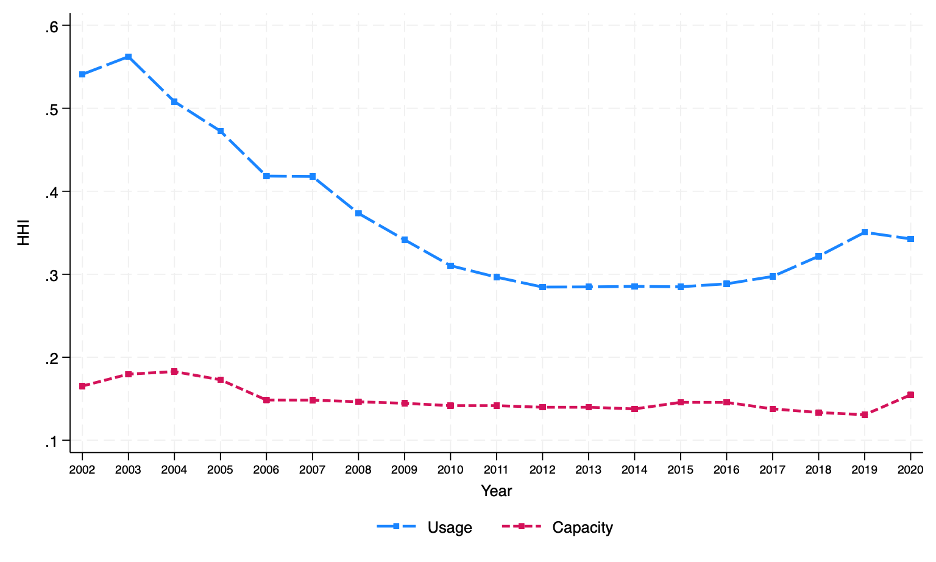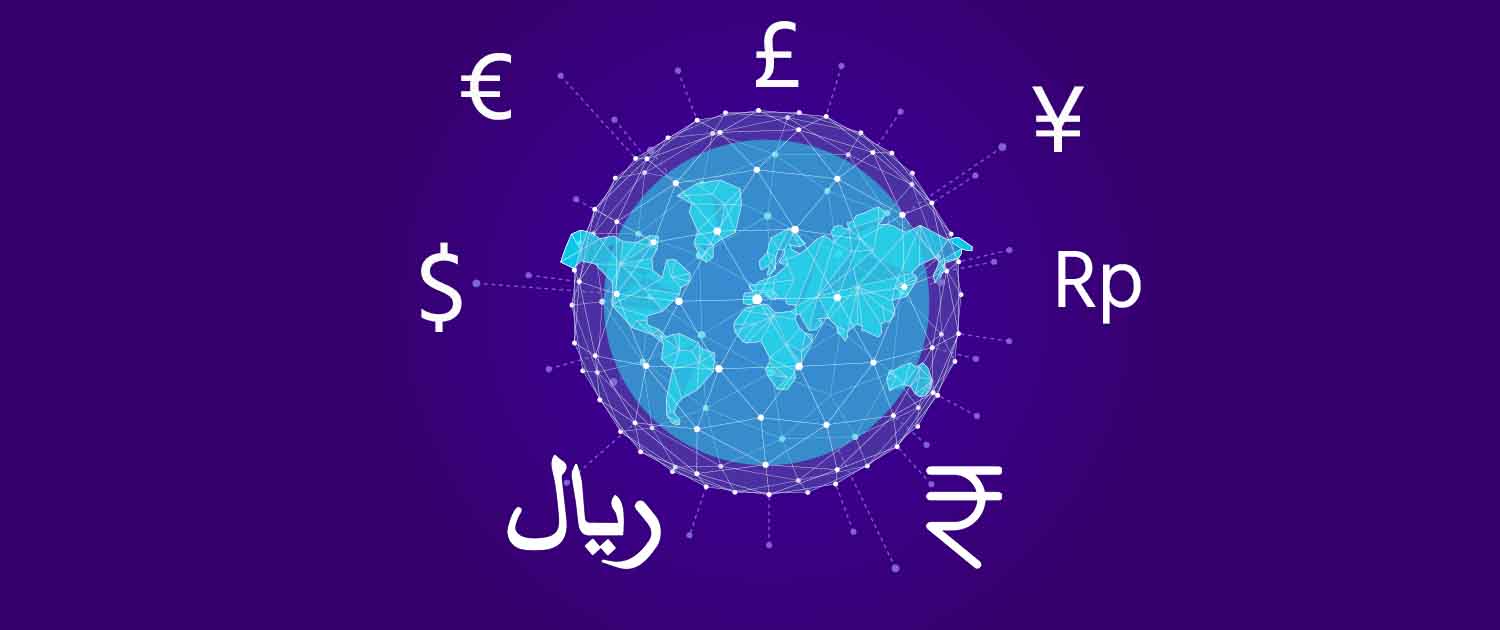- Subsea cable construction has broadened substantially since 2002, moving away from focusing only on Europe, North America, and East Asia. However, it remains concentrated in large markets.
- The benefits of investment in large markets for the rest of the world fall as the cable network becomes more built out and smaller markets become less dependent on routing through large markets.
- Private investors still find investment in large markets attractive partly because they can capture market share from existing cables.
Several hundred fiber optic cables stretch under the sea, carrying more than 99% of intercontinental Internet traffic.
Since 2015, investment in interregional ‘subsea cables’ has averaged USD 1.3 billion annually. During this time, private investors have come to play a significant role in determining which cables are built, with little economic regulation of how cables function.
My colleague, Jihye Jeon, and I at Boston University recently developed a new economic model of the construction and use of subsea Internet cables to analyze whether the market delivers an economically efficient network. Our model considers both the construction costs and the value created for Internet users in the form of greater data transmission and construction costs. Our goal is to analyze whether the market delivers an economically efficient network.
How Geographically Concentrated Is Cable Construction Relative To Use
To understand this, we calculate a standard measure of market concentration (Herfindahl-Hirschman Index, or HHI) for usage and construction over time, drawing on data from Telegeography covering 2002-2020. We consider only interregional usage and construction, where regions are approximately continents.
Figure 1 shows a substantial decrease in usage concentration (blue line) over time, with a slight increase after 2015. That is, in the early years, usage was relatively concentrated in large markets such as between Europe, North America, and East Asia. Over time, usage spread to smaller markets, such as South America and Africa.

In contrast, the geographic concentration of capacity (red line) stays almost constant. Even though usage is spreading to smaller markets, capacity is not. This result foreshadows our findings from our model calculations.
Our demand model accounts for how new cable construction between two regions can affect global data flows because distant countries may route traffic through the new route. We find that demand between pairs of countries is determined by GDP and population. In selecting paths between countries, we see Internet usage routed to paths with higher capacity and shorter distances.
We then compare the data flows from new construction (from our demand model) to the cost of cable construction estimated from Telegeography data to estimate margins cable owners collect on data flows. We find that margins fall significantly over time, consistent with observed transit pricing rates.
Investment in Large Markets Remains Profitable, Creates Fewer Societal Benefits
We use our results to calculate the profits of new construction and the benefit to consumers through higher data flows. Economists would expect these to be highly correlated in an efficient market.
While we find a general positive correlation across markets, there are important deviations where profit is relatively high in one market, whereas societal benefits are high in another. In fact, the prevalence of these deviations grew in number and importance over the 2010s.
We find that the growing prevalence of deviations results from the generally higher level of cable investment in later years. As cables are built out globally, new investment in large markets is still profitable because it gains market share from existing cables.
Moreover, the benefits of investment in large markets for the rest of the world fall as the cable network becomes more built out and smaller markets become less dependent on routing through large markets. Therefore, investment in large markets remains profitable but creates fewer societal benefits over time, which supports our result about the potential overallocation of cables to the largest markets.
Track Market Concentration across critical Internet infrastructure via Pulse.
Marc Rysman is a Professor of Economics at Boston University.
The views expressed by the authors of this blog are their own and do not necessarily reflect the views of the Internet Society.


